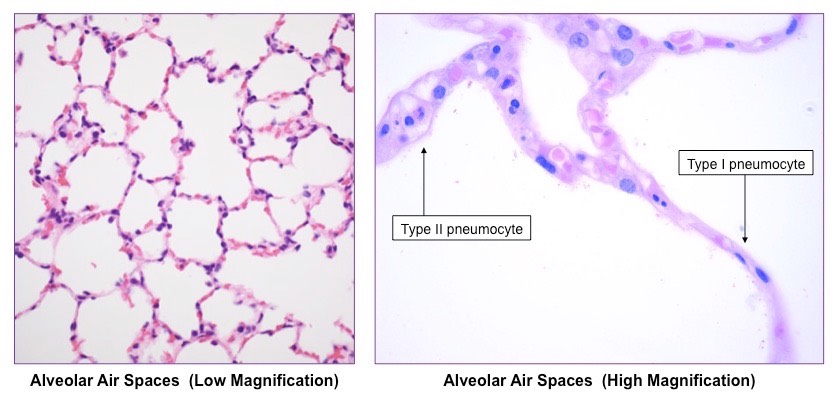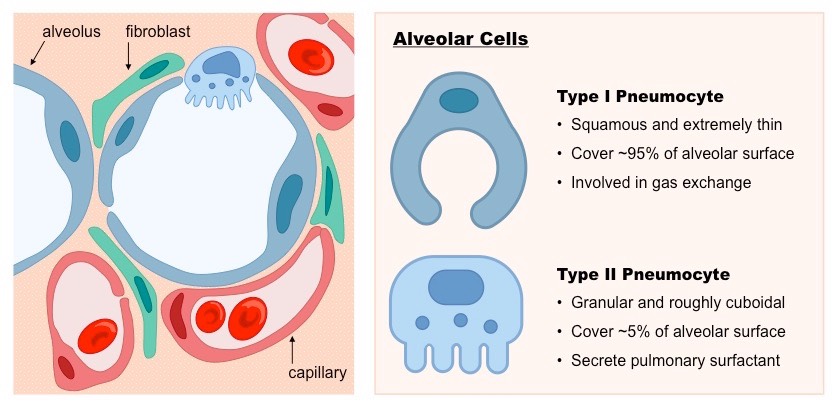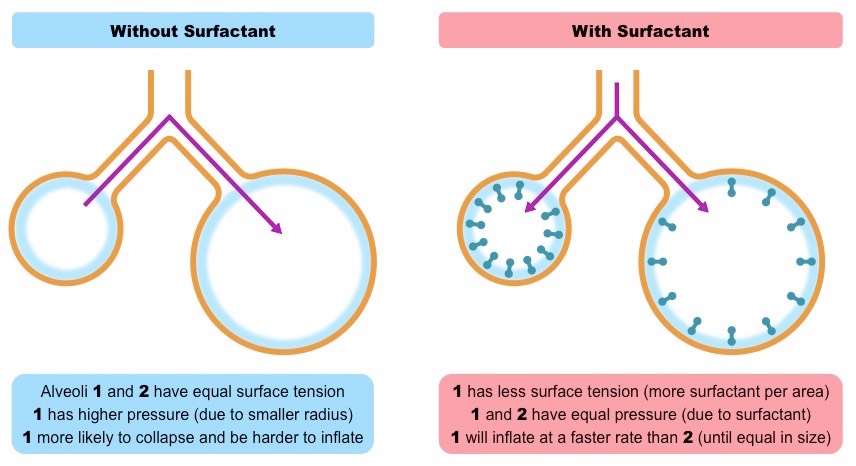![]()
Understanding:
• Type I pneumocytes are extremely thin alveolar cells that are adapted to carry out gas exchange
Pneumocytes (or alveolar cells) are the cells that line the alveoli and comprise of the majority of the inner surface of the lungs
- There are two types of alveolar cells – type I pneumocytes and type II pneumocytes
Type I pneumocytes
- Type I pneumocytes are involved in the process of gas exchange between the alveoli and the capillaries
- They are squamous (flattened) in shape and extremely thin (~ 0.15µm) – minimising diffusion distance for respiratory gases
- Type I pneumocytes are connected by occluding junctions, which prevents the leakage of tissue fluid into the alveolar air space
- Type I pneumocytes are amitotic and unable to replicate, however type II cells can differentiate into type I cells if required
Type II pneumocytes
- Type II pneumocytes are responsible for the secretion of pulmonary surfactant, which reduces surface tension in the alveoli
- They are cuboidal in shape and possess many granules (for storing surfactant components)
- Type II pneumocytes only comprise a fraction of the alveolar surface (~5%) but are relatively numerous (~60% of total cells)
Cross-Section of the Lung


⇒ Click to cycle between microscope image and simplified diagram
![]()
Understanding:
• Type II pneumocytes secrete a solution containing surfactant that creates a moist surface inside the alveoli to
prevent the sides of the alveolus adhering to each other by reducing surface tension
Alveoli are lined by a layer of liquid in order to create a moist surface conducive to gas exchange with the capillaries
- It is easier for oxygen to diffuse across the alveolar and capillary membranes when dissolved in liquid
While this moist lining assists with gas exchange, it also creates a tendency for the alveoli to collapse and resist inflation
- Surface tension is the elastic force created by a fluid surface that minimises the surface area (via cohesion of liquid molecules)
Type II pneumocytes secrete a liquid known as pulmonary surfactant which reduces the surface tension in alveoli
- As an alveoli expands with gas intake, the surfactant becomes more spread out across the moist alveolar lining
- This increases surface tension and slows the rate of expansion, ensuring all alveoli inflate at roughly the same rate
The Role of Surfactant in Regulating Surface Tension

